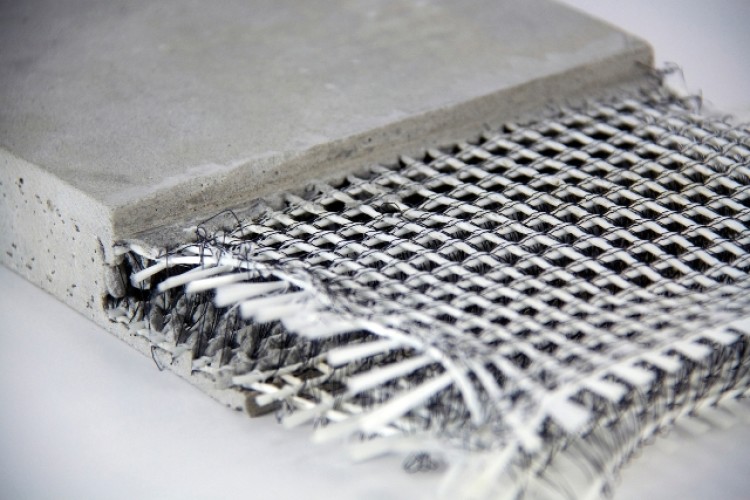Composites: The Future of Sustainable Construction Products
Composites: The Future of Sustainable Construction Products
Blog Article
Opening the Environmental Benefits of Recycled Composites in Construction and Design
In the realm of building and design, the usage of recycled compounds holds substantial guarantee for improving sustainability methods and lowering environmental effect (composites). By integrating these ingenious materials, there is a prospective to deal with important issues such as waste reduction, energy conservation, and a decline in carbon footprint. The change towards a much more lasting future in these markets rests on unlocking the full capacity of recycled composites. This conversation will certainly check out the multifaceted advantages and challenges connected with incorporating recycled compounds right into building and construction and design, using a glimpse right into the transformative opportunities that exist ahead.

Environmental Influence Decrease
The decrease of environmental effect via making use of recycled compounds in construction and style plays a crucial role in sustainable techniques. By including recycled compounds into building materials, the construction market can dramatically lower its carbon impact and contribute to a more green future. These sustainable materials, made from repurposed plastics, wood fibers, or various other recycled components, provide a viable option to standard construction products without compromising on top quality or sturdiness.
Recycled compounds aid draw away waste from garbage dumps and decrease the demand for extracting basic materials, hence conserving natural deposits. In addition, the manufacturing process of these composites usually consumes much less energy and sends out fewer greenhouse gases compared to generating virgin products (composites). This change towards using recycled compounds not just minimizes ecological harm but additionally advertises a circular economy by encouraging the reuse of products that would certainly otherwise be disposed of
Waste Minimization
With a concentrate on reducing waste in building and design, the combination of recycled compounds offers a sustainable remedy to reduce environmental effect. Waste reduction is a critical facet of sustainable methods, and using recycled compounds offers a possibility to attain this goal successfully. By making use of materials that have already served their initial function, such as recycled plastics or reclaimed timber fibers, the building and design sectors can significantly minimize the quantity of waste produced and sent out to garbage dumps.
Recycled compounds have the prospective to divert considerable amounts of waste from conventional disposal approaches, contributing to a more circular economic situation where resources are made use of effectively. Additionally, the production procedure of recycled composites usually consumes less energy and creates less discharges contrasted to virgin materials, even more decreasing the environmental impact of building and design jobs.
Implementing waste minimization approaches with the consolidation of recycled compounds not only aids in preserving natural deposits however likewise promotes a more lasting approach to building and making for a greener future.
Power Preservation
Including recycled compounds not only decreases waste in building and style yet likewise plays an essential role in improving power preservation methods within the sector. Making use of recycled compounds in building can considerably add to power preservation via various methods. First of all, the manufacturing of virgin products typically calls for substantial energy inputs, whereas using recycled composites takes in much less power, thus reducing overall power usage. Additionally, incorporating recycled compounds can add to better insulation properties in structures, lowering the demand for extreme heating or air conditioning, and subsequently decreasing energy use for environment control. The lightweight nature of many recycled compounds can lead to lighter structures, requiring much less power for transportation and setup. By promoting using recycled composites in building and construction and design, the industry can make substantial strides towards achieving power performance and decreasing its carbon impact, eventually adding to a much more sustainable built atmosphere.
Carbon Footprint Reduction
Enhancing sustainability methods with the use of recycled composites in building and design considerably lowers the carbon impact of the sector. By integrating recycled materials right into the manufacturing of compounds, the requirement for virgin sources lowers, causing reduced power intake and greenhouse gas discharges related to standard production procedures. This reduction in carbon footprint is important in combating climate adjustment and advertising a much more environmentally pleasant strategy to building and layout.
In addition, the usage of recycled compounds also aids in diverting waste from land fills, thereby minimizing the ecological influence of disposal and advertising a circular economy. The carbon impact decrease achieved through the fostering of recycled composites lines up with the international press in the direction of sustainable practices and the decrease of commercial emissions. It showcases a dedication to responsible resource management and a shift towards greener alternatives in the building and style markets. Inevitably, by prioritizing the assimilation of recycled compounds, the sector can make substantial strides in reducing its carbon impact and adding to a much more sustainable future.
Sustainable Future
The combination of recycled compounds in construction and style not just addresses instant ecological problems however likewise lays a solid structure for a sustainable future in the market. By including recycled compounds right into building materials and items, the building and construction and design fields can significantly minimize their dependence on virgin sources, bring about an extra circular economic climate. This shift towards sustainability is important for mitigating the ecological effect of standard construction practices, which frequently cause high degrees of waste generation and source deficiency.

Verdict
To conclude, recycled compounds supply substantial ecological see this page advantages in building and construction and layout by reducing environmental influence, decreasing waste, preserving power, lowering carbon impact, and advertising a sustainable future. Embracing using recycled compounds can add to a much more environmentally-friendly technique to building and design, ultimately bring about a more sustainable and greener future for all.
The reduction of ecological effect via the use of recycled composites in building and style plays a critical duty in sustainable techniques.With a focus on minimizing waste in building and construction and design, the combination of recycled composites offers a sustainable service to decrease environmental effect. By advertising the usage of recycled compounds in construction and layout, the market can make considerable strides towards attaining power effectiveness and lowering its carbon impact, inevitably adding to a much more sustainable constructed atmosphere.

Report this page